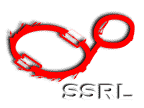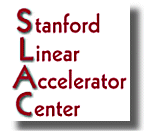| Recent
Advances in Medical Applications of Synchrotron Radiation Stanford Synchrotron Radiation Laboratory March 4-5, 2002 Program Director: Edward Rubenstein |
|
An
Overview of Synchrotron Radiation Source Technology in Medical Imaging
Roman Tatchyn Stanford Synchrotron Radiation Laboratory, Stanford University, Stanford, CA 94305 |
| The last two decades have produced significant progress in the development and application of synchrotron radiation (SR) source technology to medical imaging. Over the last decade, for example, both new techniques and modes of imaging have been either proposed or attempted and continuing technological advancements have made it possible to begin considering the development of newer and more economical X-ray sources. From a physical point of view, the primary factors in this promising evolution include the photon phase space requirements of the imaging technique, the machine and insertion device technologies used to generate the photons, the X-ray optics used to couple the source to the subject, and the components of the detection and imaging systems. In this presentation a brief overview of SR source technology in relation to the medical imaging field of coronary angiography will be outlined and trends and possible future directions involving newer imaging techniques and X-ray source technologies, in particular those involving insertion devices, will be discussed. |



